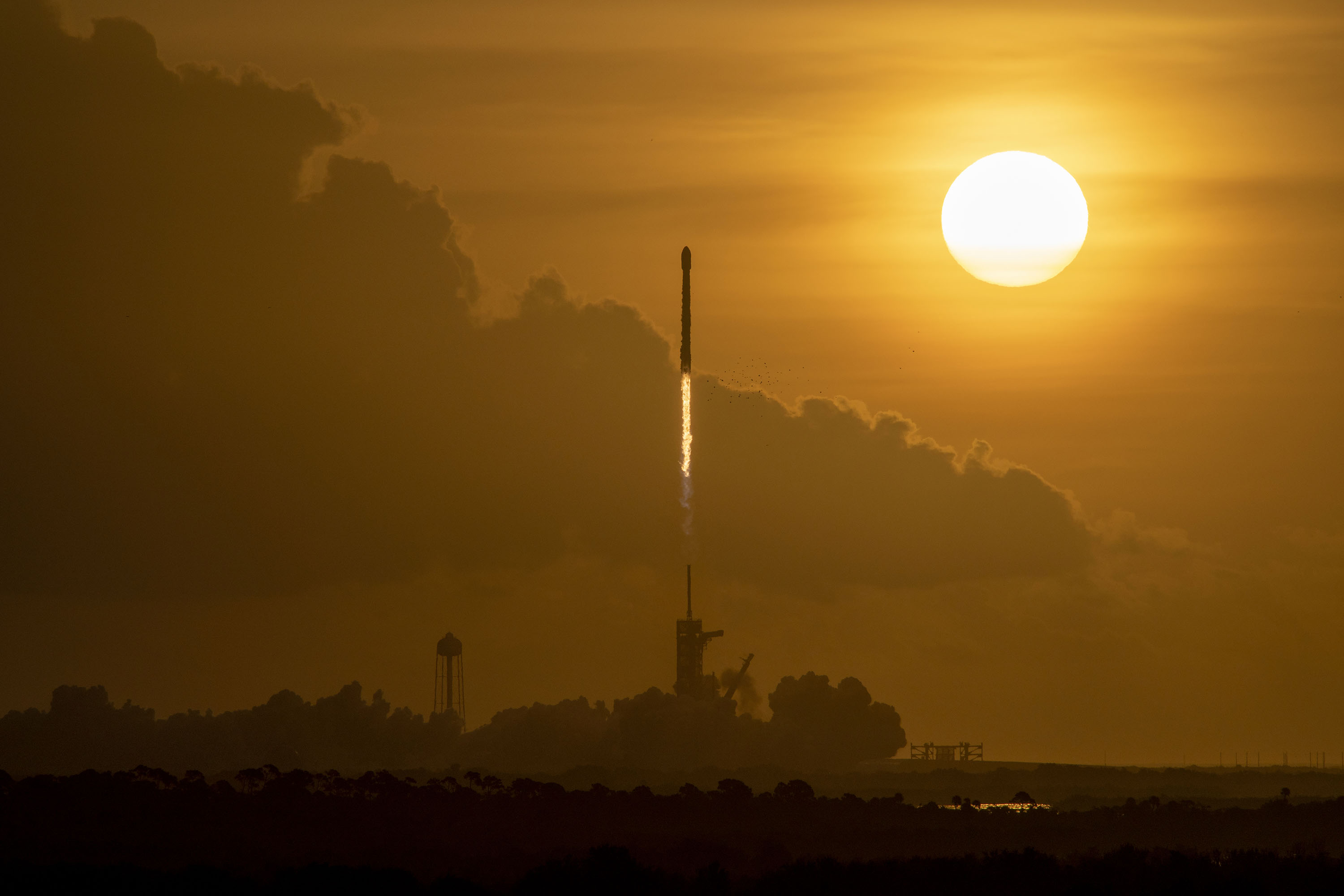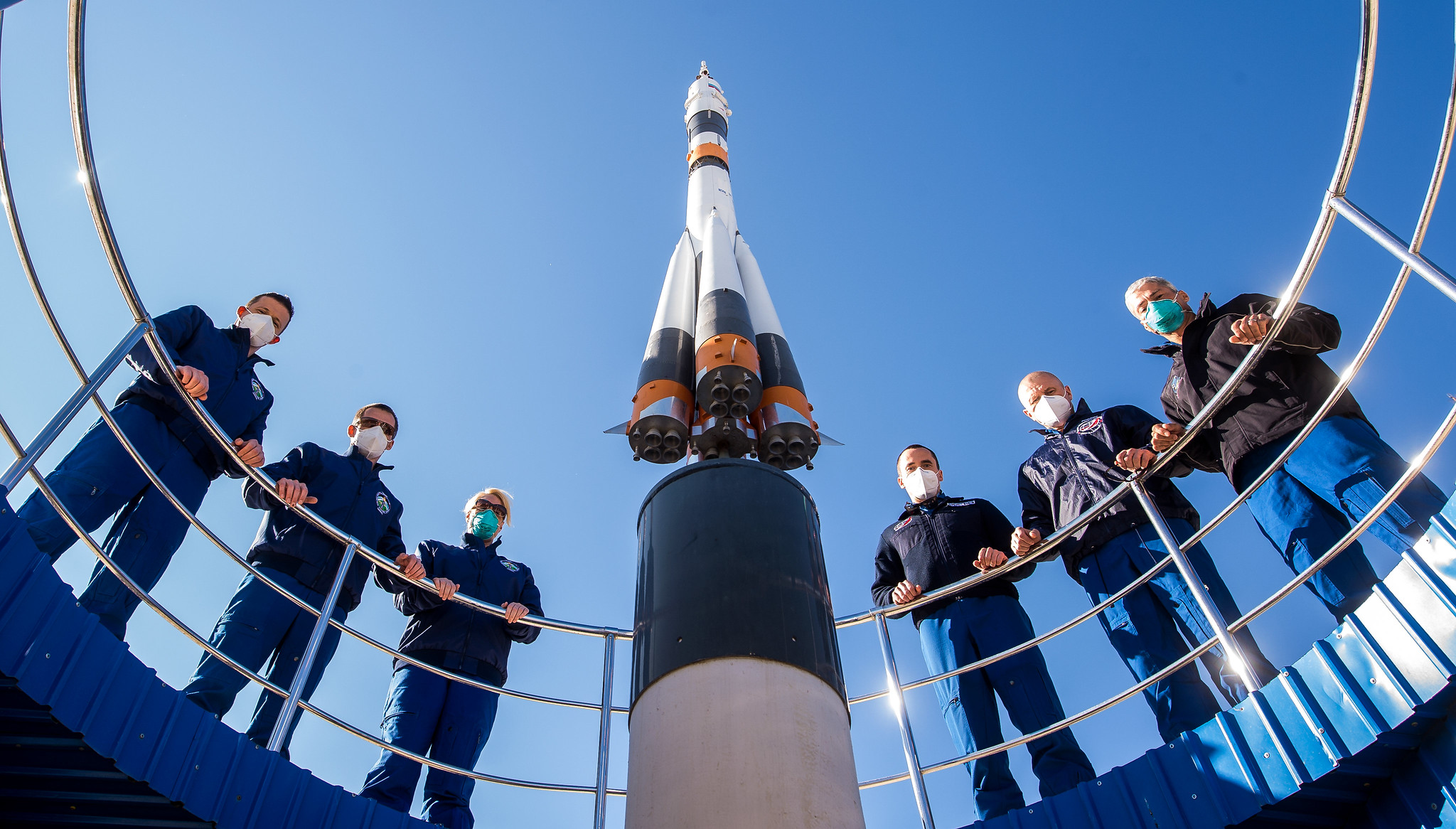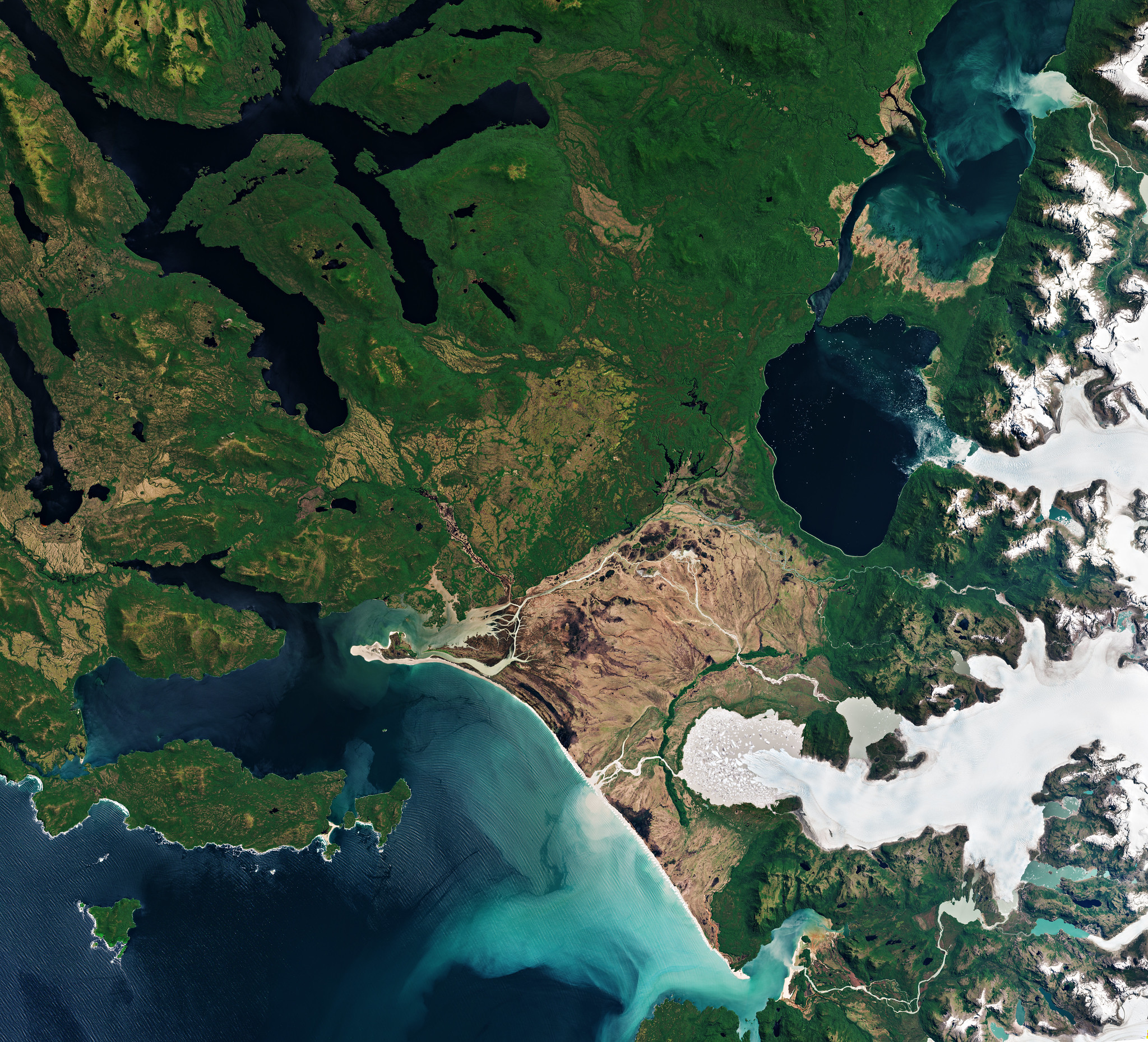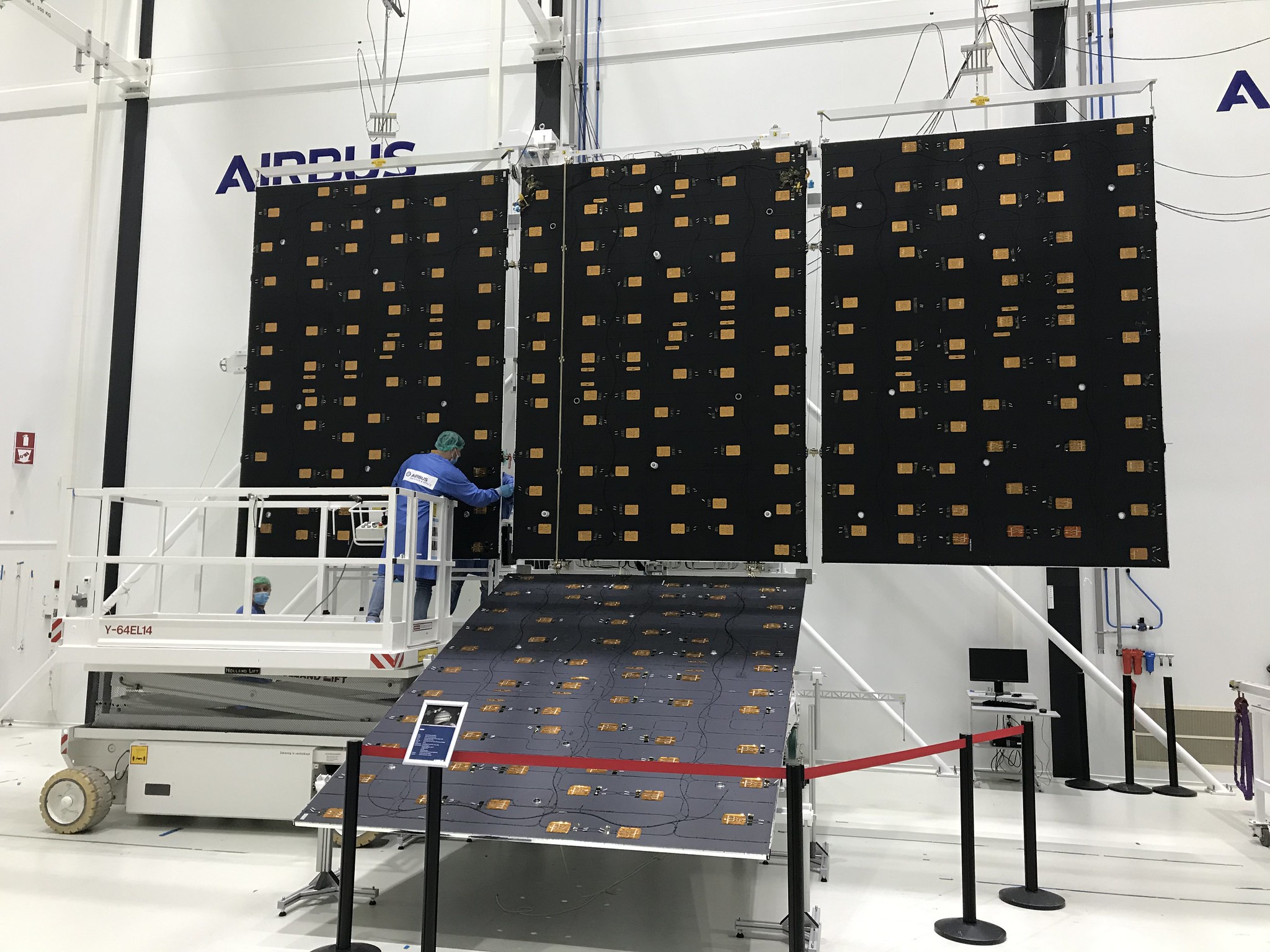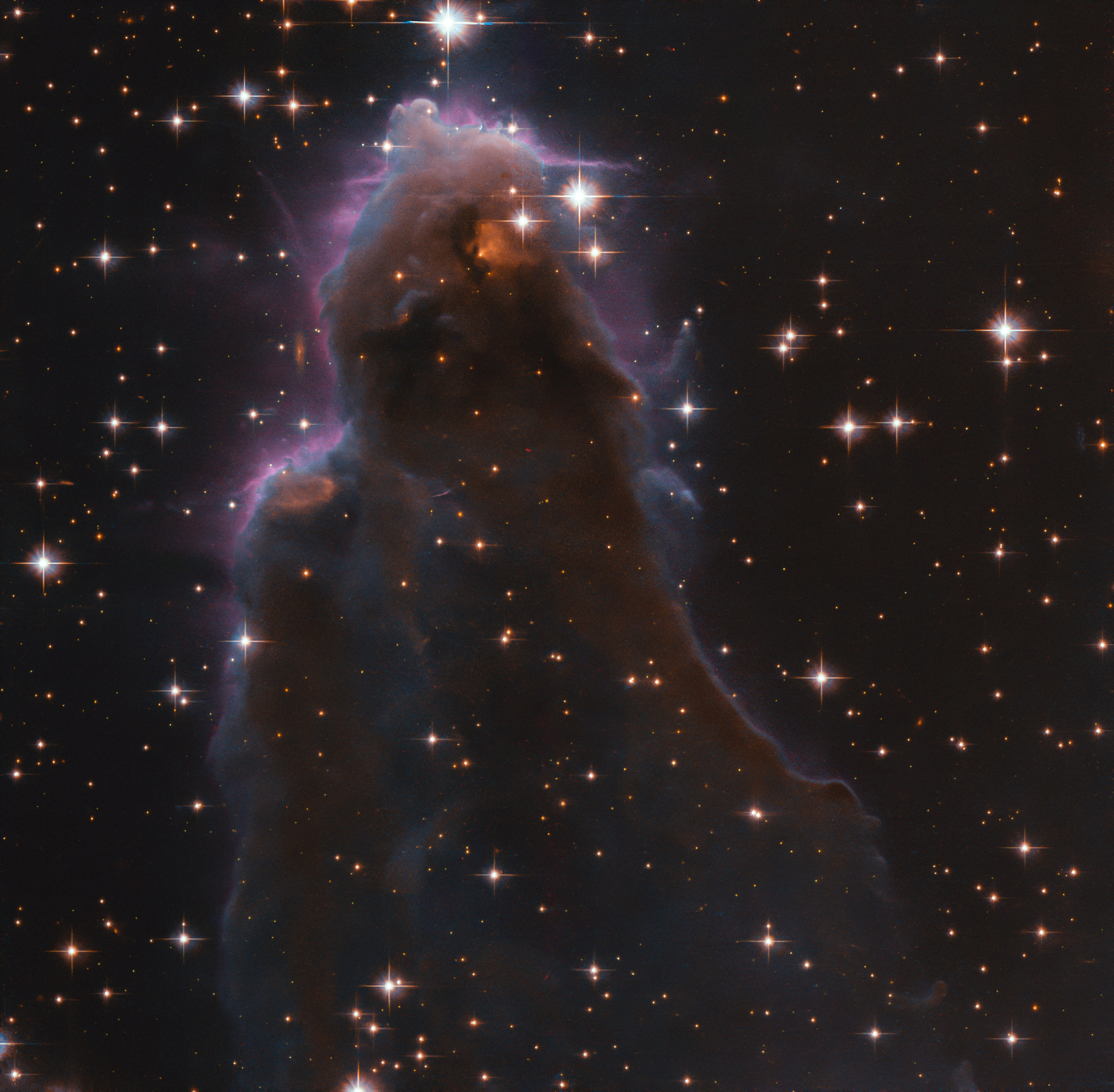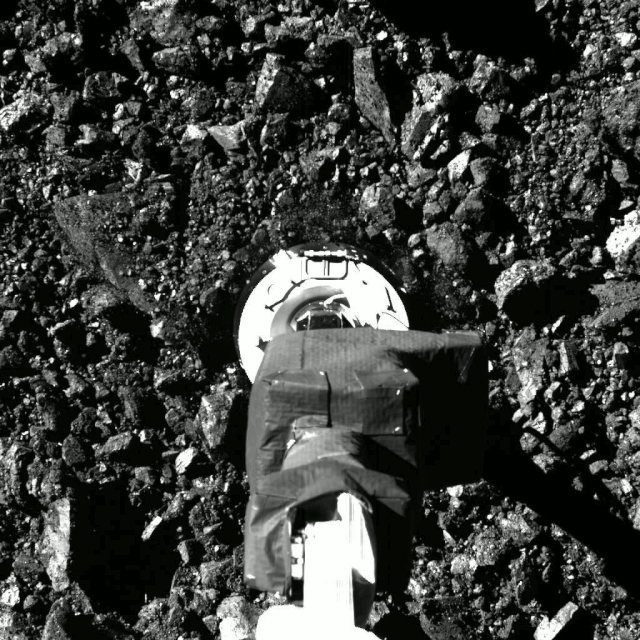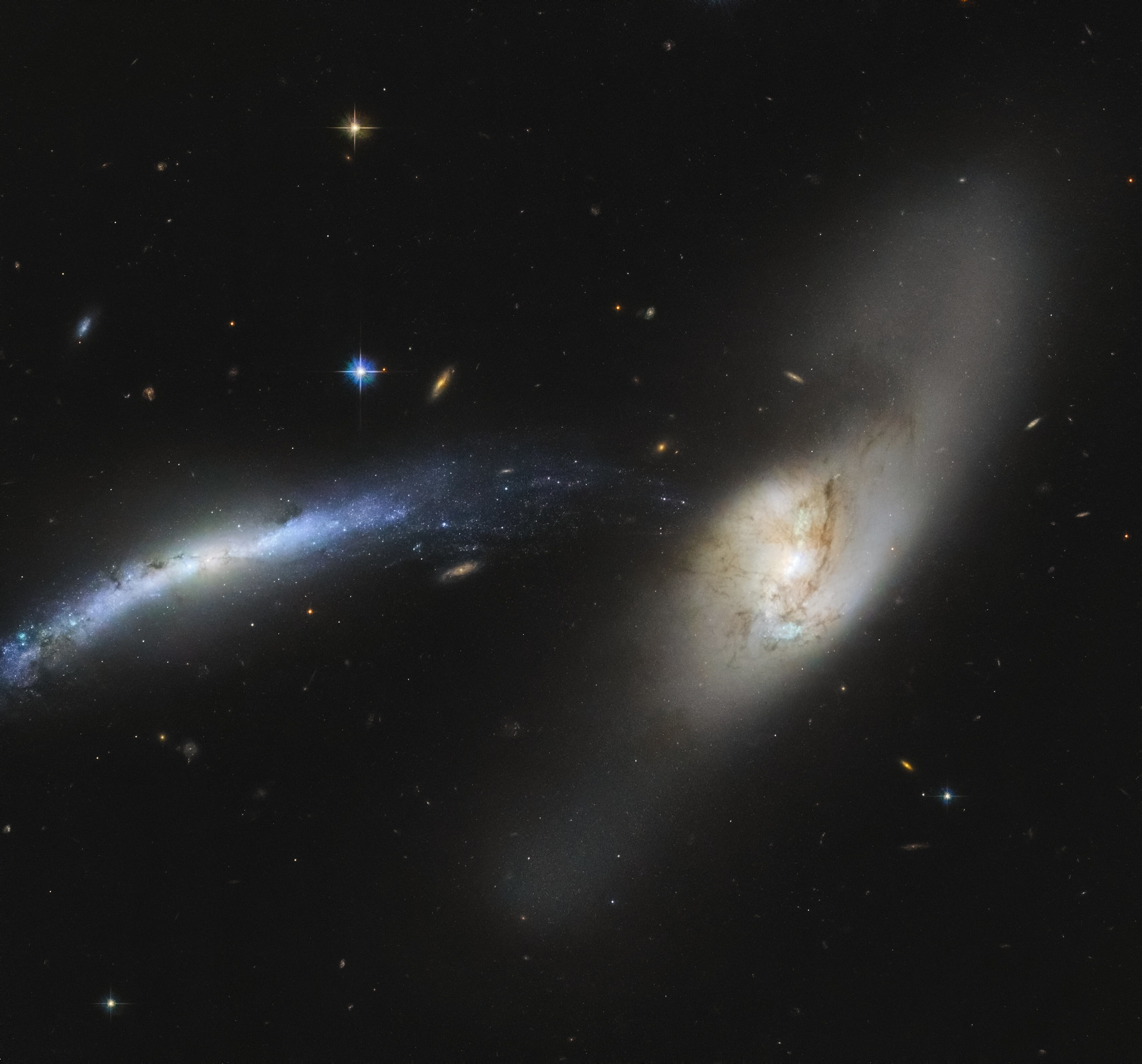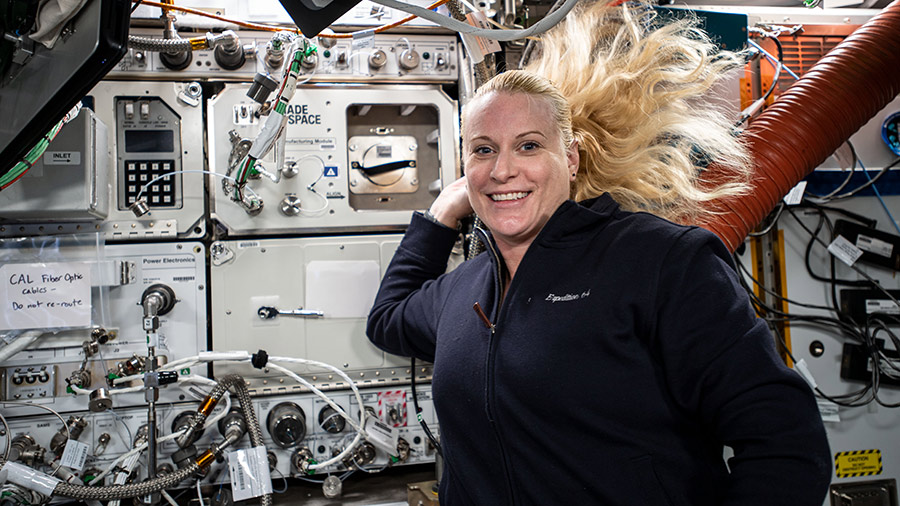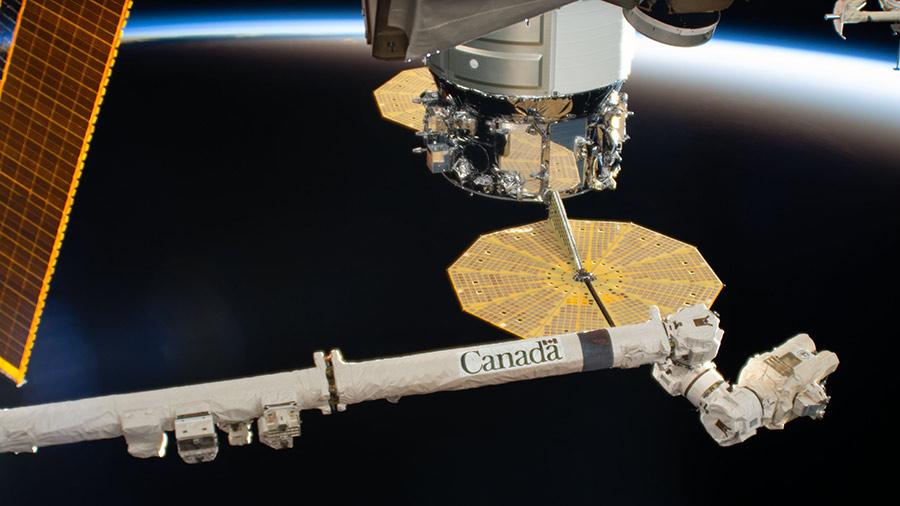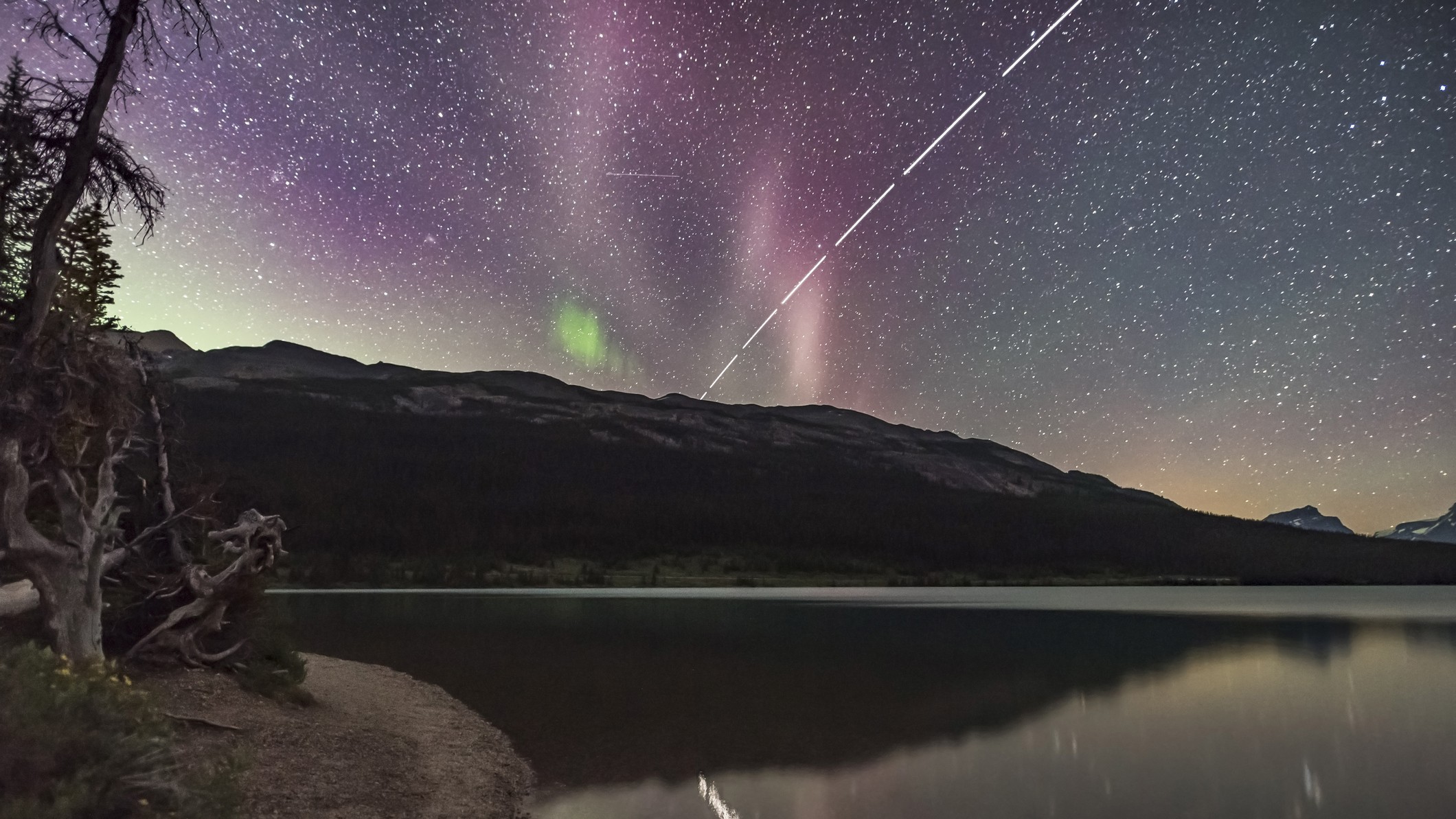Image of the Day 2020 Archive
October 2020
SpaceX attempts to launch
Thursday, October 1, 2020: Twin SpaceX Falcon 9 rockets can be seen in this single shot, taken at Kennedy Space Center before the company's latest Starlink launch attempt Oct. 1, 2020, which was scrubbed. SpaceX continues to launch batches of its Starlink satellites, working to build a constellation of satellites to provide internet service here on Earth.
A spiral in Lupus
Friday, October 2, 2020: The spiral galaxy NGC 5643, which rests in the constellation of Lupus (the Wolf) stands out in this image by the Hubble Space Telescope. This galaxy lies about 60 million light-years from Earth and recently was home to the supernova 2017cbv.
SpaceX's 13th Starlink batch
Tuesday, October 6, 2020: This morning (Oct. 6), SpaceX launched its 13th batch of Starlink satellites to low-Earth orbit. The 60 satellites launched atop the two-stage Falcon 9 rocket, lifting off from Pad 39A at NASA's Kennedy Space Center. This takeoff followed a two-week launch delay that was caused by bad weather. Read the full story!
Expedition 64
Wednesday, October 7, 2020: The Expedition 64 prime and backup crew members pose together on Oct. 6 before the prime crew launches to the International Space Station on Oct. 14. From left to right are the prime crew NASA astronaut Kate Rubins, Sergey Kud-Sverchkov of Roscosmos and Sergey Ryzhikov of Roscosmos and then the backup crew members Petr Dubov of Roscosmos, Oleg Novitskiy of Roscosmos and NASA astronaut Mark Vande Hei.
James Webb has passed another test
Thursday, October 8, 2020: NASA's James Webb Space Telescope has completed a set of milestone tests, enduring shaking and rattling created to simulate the conditions it will experience when it launches to space. The tests are more formally known as "acoustic" and "sine-vibration" testing, and were completed in two separate facilities at Northrop Grumman’s Space Park in California.
Sunset captured from space
Friday, October 9, 2020: NASA astronaut Chris Cassidy, who is currently stationed aboard the International Space Station, posted a photo to Twitter that shows what sunset looks like from space. His photo shows the sunset a video camera is capturing as the station's robotic arm maneuvers around the Cygnus spacecraft.
Lost in space: A Mars probe camera
Monday, October 12, 2020: A tiny camera tumbles out into deep space after being ejected by China's Tianwen-1 Mars probe 15 million miles from Earth. The image, released Oct. 1, was captured as Tianwen-1 heads to Mars. The camera was able to snap photos of Tianwen-1, which carries a Mars orbiter, lander and rover that are due to arrive at the Red Planet in February 2021.
Breaking space news, the latest updates on rocket launches, skywatching events and more!
The Laguna San Rafael National Park from space
Tuesday, October 13, 2020: The European Space Agency's Copernicus Sentinel-2 mission spotted the Laguna San Rafael National Park in Chile from space. This orbiting satellite has five instruments onboard that allow it to not only observe Earth below, but also monitor atmospheric conditions like temperature and humidity.
Astronauts blast off to space
Wednesday, October 14, 2020: This morning at 1:45 am EDT (0545 GMT), NASA astronaut Kate Rubins launched to the International Space Station from the Baikonur Cosmodrome in Kazakhstan along with cosmonauts Sergey Ryzhikov and Sergey Kud-Sverchkov. After a speedy arrival at the space station, the trio will begin a six-month stay living and working on the orbiting lab.
Thomas Pesquet trains for space
Thursday, October 15, 2020: European space agency astronaut Thomas Pesquet trains at NASA's Johnson Space Center in Houston in preparation for his 2021 mission to the International Space Station. Here he is training for the Time experiment, which was first run in 2017 and which explores the hypothesis that time speeds up in microgravity.
BepiColombo swings by Venus
Friday, October 16, 2020: Yesterday (Oct. 15), the European-Japanese probe BepiColombo swung by Venus, one of its nine gravity assist maneuvers, on its long winding journey to Mercury. At Venus, the craft snapped a number of photos with the cameras aboard its Mercury Transfer Module. The probe is set to eventually arrive in Mercury's orbit in 2025.
Stars of Orion twinkle over ALMA
Monday, October 19, 2020: The constellation of Orion, the hunter sparkles above the Atacama Large Millimeter/submillimeter Array (ALMA) in Chile's Atacama Desert in this image by European Southern Observatory photo ambassador Yuri Beletsky. Two of the 66 radio telescopes that make up ALMA are shown in this view. Located on top of the 16,000-foot (5,000 meters) Chajnantor plateau, ALMA's location provides the dark, dry skies that are crucial for observing the cosmos in millimeter and submillimeter wavelengths. — Hanneke Weitering
Juice grows a pair of wings
Tuesday, October 20, 2020: The ten solar panels for the European Space Agency's Juice (Jupiter Icy Moons Explorer) spacecraft are ready to be turned into solar wings. The panels arrived at Airbus Defense and Space in the Netherlands and, with five solar panels on each side of the spacecraft, the panels will fold up inside the launcher and then eventually deploy like wings for the probe.
A free-floating stellar nursery
Wednesday, October 21, 2020: The Hubble Space Telescope, which celebrated its 30th year of exploration and discovery earlier this year, snapped this image of the star-forming nursery formerly known as J025157.5+600606. This special type of stellar nursery is what's known as a "Free-floating Evaporating Gaseous Globules" or frEGGs.
Collecting an asteroid
Thursday, October 22, 2020: In this 16-image series, you can see NASA's OSIRIS-REx spacecraft using its 11-foot robotic arm TAGSAM taking a sample from asteroid Bennu on Oct. 20, 2020. The arm's "head" briefly touched down on the asteroid's surface, where it emitted a puff of nitrogen gas. This gas stirred up asteroid material that was then collected into a container in TAGSAM.
Chris Cassidy returns home
Friday, October 23, 2020: NASA astronaut Chris Cassidy landed back on Earth Oct. 22, 2020 after a stint aboard the International Space Station. Cassidy can be seen here outside the Soyuz MS-16 spacecraft that he and his crewmates, cosmonauts Ivan Vagner and Anatoly Ivanishin, landed in near the town of Zhezkazgan in Kazakhstan.
A galactic waterfall
Monday, October 26, 2020: Galaxy NGC 2799 (on the left) and galaxy NGC 2798 (on the right) form a "galactic waterfall," which stands out in this image snapped by the Hubble Space Telescope. These are interacting galaxies, which influence each other and may eventually even merge.
Orion gets ready
Tuesday, October 27, 2020: NASA's Orion spacecraft is one more step closer to being completed and launched to the moon. Here, three spacecraft jettison fairings are prepared to be installed and secured around the Orion craft. Orion is set to fly as part of the agency's Artemis program and will fly the first woman and the next man to land on the moon.
Kate in space
Wednesday, October 28, 2020: Expedition 64 NASA astronaut Kate Rubins floats on the International Space Station where she'll be living, working and researching as part of a myriad of science experiments alongside her crewmates. Rubins launched to the space station Oct. 14, 2020 alongside two Russian cosmonauts.
Exploring at the space station
Thursday, October 29, 2020: This photo shows the Canadarm2 robotic arm at the International Space Station which continues to orbit around Earth from 254 miles (409 kilometers) away. The robotic arm, a collaboration with Canada, helps to make repairs on the space station and astronauts have used it complete activities on spacewalks outside of the space station.
It's the great pumpkin, Hubble!
Friday, October 30, 2020: Just in time for Halloween, the Hubble Space Telescope spotted a "pumpkin patch" made up of two galaxies just starting to collide, spanning 109,000 light-years across. The galaxies, NGC 2292 and NGC 2293, are pumpkin-orange in color because of the aging stars in the galaxies, which appear red.
Can't find the date you're looking for? It may have been a weekend or holiday, when we don't normally update our Image of the Day.
Click 'NEXT PAGE' below for November >

Space.com is the premier source of space exploration, innovation and astronomy news, chronicling (and celebrating) humanity's ongoing expansion across the final frontier. Originally founded in 1999, Space.com is, and always has been, the passion of writers and editors who are space fans and also trained journalists. Our current news team consists of Editor-in-Chief Tariq Malik; Editor Hanneke Weitering, Senior Space Writer Mike Wall; Senior Writer Meghan Bartels; Senior Writer Chelsea Gohd, Senior Writer Tereza Pultarova and Staff Writer Alexander Cox, focusing on e-commerce. Senior Producer Steve Spaleta oversees our space videos, with Diana Whitcroft as our Social Media Editor.


